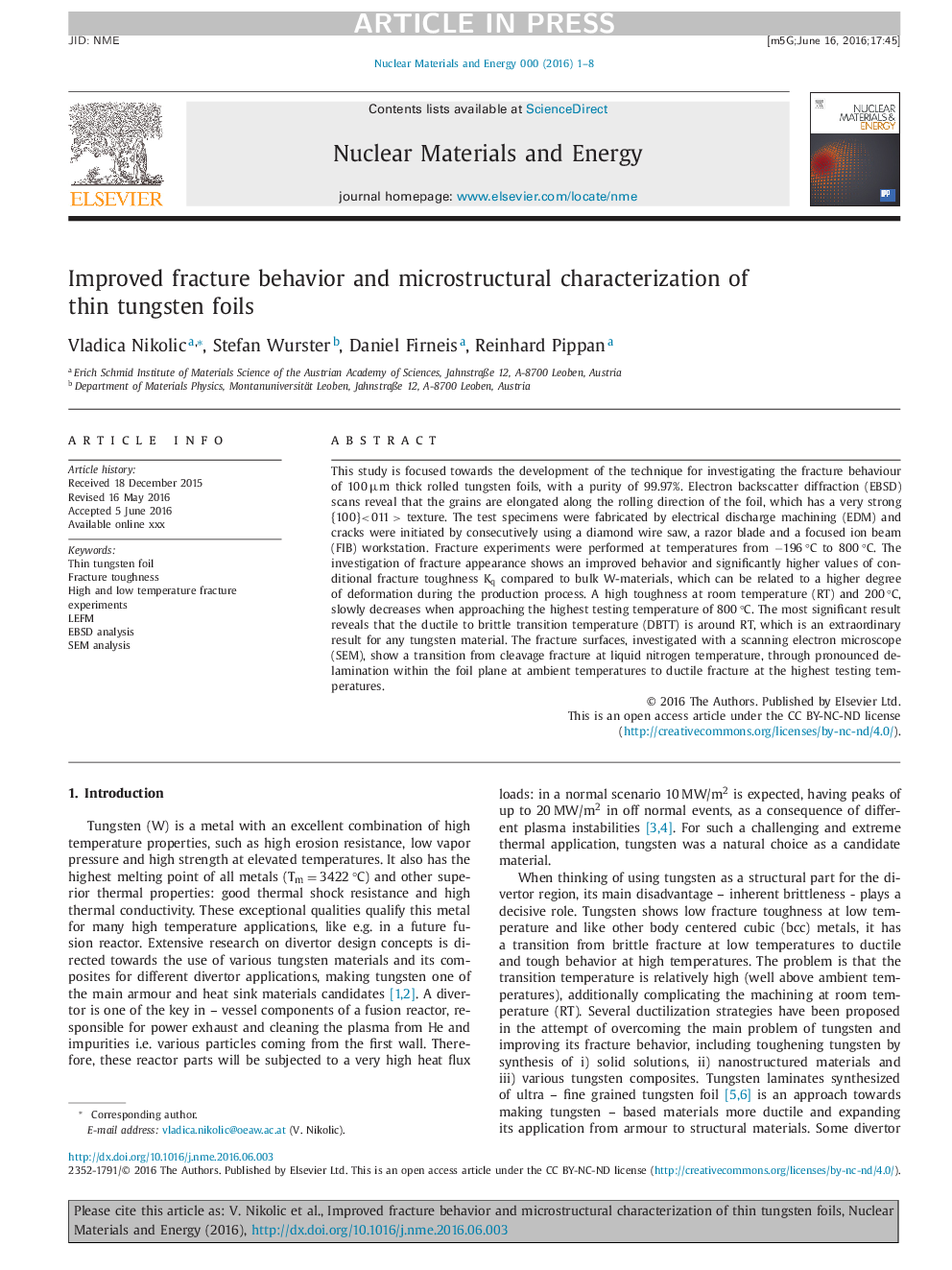| Article ID | Journal | Published Year | Pages | File Type |
|---|---|---|---|---|
| 7987611 | Nuclear Materials and Energy | 2016 | 8 Pages |
Abstract
This study is focused towards the development of the technique for investigating the fracture behaviour of 100 µm thick rolled tungsten foils, with a purity of 99.97%. Electron backscatter diffraction (EBSD) scans reveal that the grains are elongated along the rolling direction of the foil, which has a very strong {100}< 011 > texture. The test specimens were fabricated by electrical discharge machining (EDM) and cracks were initiated by consecutively using a diamond wire saw, a razor blade and a focused ion beam (FIB) workstation. Fracture experiments were performed at temperatures from â196 °C to 800 °C. The investigation of fracture appearance shows an improved behavior and significantly higher values of conditional fracture toughness Kq compared to bulk W-materials, which can be related to a higher degree of deformation during the production process. A high toughness at room temperature (RT) and 200 °C, slowly decreases when approaching the highest testing temperature of 800 °C. The most significant result reveals that the ductile to brittle transition temperature (DBTT) is around RT, which is an extraordinary result for any tungsten material. The fracture surfaces, investigated with a scanning electron microscope (SEM), show a transition from cleavage fracture at liquid nitrogen temperature, through pronounced delamination within the foil plane at ambient temperatures to ductile fracture at the highest testing temperatures.
Related Topics
Physical Sciences and Engineering
Energy
Nuclear Energy and Engineering
Authors
Vladica Nikolic, Stefan Wurster, Daniel Firneis, Reinhard Pippan,
